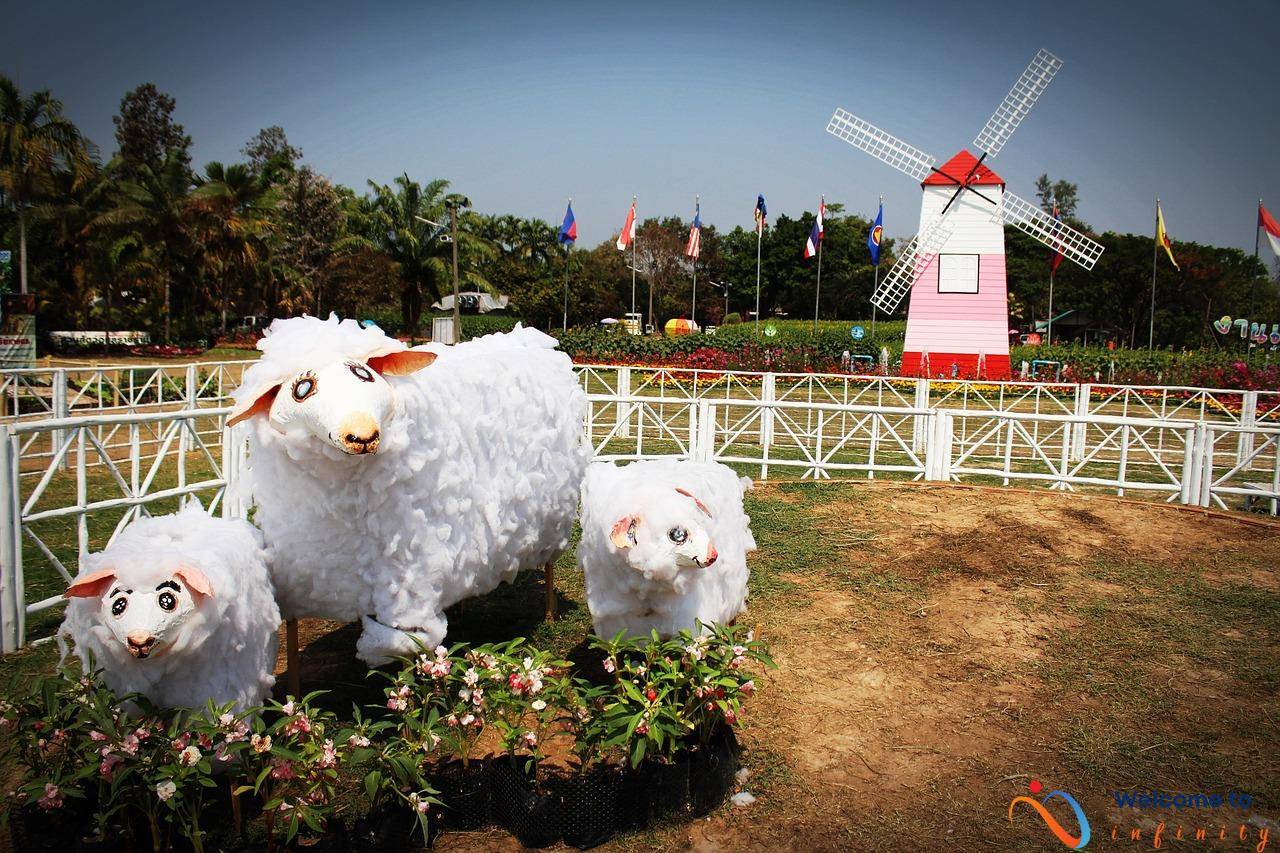Fashion has always been shaped by cultural influences from around the world. From traditional textiles, patterns, and styles to iconic symbols and motifs, myriad cultural elements have seeped into mainstream fashion over time, changing the industry and shaping new trends.
In this article, we explore the ways in which cultural elements are incorporated into mainstream fashion, and how traditional clothing from different parts of the world is adapted for the modern runway and streetwear.
As globalization has made it easier to access different cultures, designers have increasingly incorporated ethnic patterns and styles into their collections. Fashion shows often feature pieces that pay homage to various cultures, and streetwear brands now embrace cultural influences, using them in their designs and collaborations.
The use of cultural elements in fashion, however, has also been controversial, with some accused of cultural appropriation – the use of a cultural symbol or artifact outside of its original cultural context – which can be seen as disrespectful and insensitive to the culture being appropriated. This has led designers to tread carefully when using cultural elements, with many paying homage to traditional clothing without appropriating or disrespecting cultures.
In conclusion, cultural influences in fashion are here to stay. As the industry continues to evolve, so too will the ways in which fashion designers incorporate them into their collections, adapting and blending traditional styles and modern trends. It's essential for designers to view cultural elements with sensitivity and respect, and to understand their origins and significance to avoid cultural appropriation.
History of cultural influence in fashion
Fashion has always been influenced by different cultures throughout history, from Ancient Egypt to the present day. The ancient Egyptians, for instance, are known for their use of linen clothing, while the Greeks and Romans were famous for their togas and draped styles. The Middle Ages saw the arrival of the corset, while the Renaissance gave us large ruffs and padded sleeves.
During the 18th and 19th centuries, global exploration led to the introduction of new textiles, patterns, and designs from diverse cultures. This resulted in the rise of Orientalism, with the fascination and appropriation of Eastern cultures becoming popular in Europe. The Victorian era saw the popularity of bustles and crinolines, while the 1920s introduced the flapper style and Art Deco, influenced by African-American jazz culture and Egyptian design imagery.
Modern fashion has seen several cultural influences, from the hippie bohemian style of the 1960s to the punk movement of the 1970s and 1980s, inspired by the rebellious and anti-establishment attitudes of youth countercultures. Looking beyond the West, the traditional clothing of Native American and African tribes has also inspired fashion designers, with brands incorporating indigenous motifs and designs into their collections.
Today, we see designers looking to other parts of the world for inspiration, from the bright colors and intricate embroidery of India to the minimalist and functional aesthetics of Japan. Fashion is constantly evolving, influenced by cultural elements from all corners of the globe, and it's fascinating to see how these different traditions and styles are adapted and incorporated into modern fashion trends and styles.
Cultural appropriation vs. appreciation in fashion
Cultural sensitivity has become a key issue in the fashion industry in recent years as designers continue to incorporate traditional clothing and cultural elements in their collections. However, this has led to controversies surrounding cultural appropriation, where inappropriate use of cultural elements by designers can be seen as disrespectful or offensive to the culture in question.
It is important for designers to recognize the difference between cultural appropriation and appreciation. While cultural appropriation takes elements from a culture without respecting their significance or context, cultural appreciation acknowledges and pays tribute to traditional clothing and cultural elements while respecting their history and background.
Designers can embrace cultural appreciation by working with artisans and craftsmen from the culture in question. This ensures that traditional clothing and cultural elements are accurately represented and the knowledge and skills of talented craftsmen are recognized and celebrated.
- Designers should research the cultural significance of the elements they wish to incorporate into their designs.
- Consult and collaborate with individuals from the culture to ensure accuracy and respect to the culture.
- Acknowledge and give credit to the culture when incorporating their elements into the designs.
Thus, cultural appropriation can be avoided by promoting cultural sensitivity, mutual respect, and understanding. Fashion designers have the power to promote and celebrate cultural diversity, and with awareness and mindfulness, they can avoid cultural appropriation and promote cultural appreciation through their designs.
The impact of globalization on fashion
Globalization has had a significant impact on the fashion industry, particularly in terms of cultural influences. With the world becoming increasingly interconnected, designers have easier access to traditional clothing and textiles from different parts of the globe, allowing them to incorporate these elements into their collections. This has resulted in a diverse range of fashion styles and designs, with cultural influences from all over the world.
However, with this newfound accessibility comes the need for cultural sensitivity and understanding. Designers need to be aware of the cultural significance of the traditional clothing and textiles they are using in their collections, and ensure that they are not appropriating or disrespecting the culture it comes from. This has become increasingly important in recent years, with high-profile cases of cultural appropriation in the fashion industry leading to public backlash and criticism.
Moreover, globalization has also heightened the need for sustainable and ethical fashion practices, which includes respecting and engaging with the cultures from which these traditional clothing and textiles come from. It is necessary to ensure that proper credit and recognition is given to the cultures and communities that have contributed to the fashion industry's diversity and creativity.
In conclusion, while globalization has undoubtedly made it easier for designers to incorporate cultural influences into their collections, it has also reinforced the importance of cultural sensitivity and understanding in the fashion industry. The future of fashion will require designers to embrace and celebrate cultural diversity while being mindful of cultural appropriation and promoting ethical and sustainable fashion practices.
Examples of cultural appropriation in fashion
Cultural appropriation has been a highly debated topic in the fashion industry, with several prominent cases causing widespread backlash. In 2015, Valentino faced criticism for sending predominantly white models down the runway wearing cornrows and Native American-inspired headdresses. Similarly, Chanel was accused of cultural appropriation in 2020 when models wore traditional Maori feather headdresses in a runway show in Paris.
The negative impact of cultural appropriation in fashion extends beyond just the act itself. When traditional clothing and cultural elements are taken out of context and used for fashion purposes, it can reinforce harmful stereotypes and disrespect the cultural heritage of marginalized groups. It can also take business away from small communities and artisans who depend on the production and sale of traditional clothing.
Despite the controversy surrounding cultural appropriation, it remains a prevalent issue in the fashion industry. It highlights the need for designers to educate themselves on the cultural significance of the elements they are using and to work with members of the cultural community to ensure that their incorporation is done respectfully and with permission.
It's important for designers to understand that there is a fine line between cultural appropriation and cultural appreciation. By taking the time to learn about the significance of traditional clothing and cultural elements, designers can create collections that pay homage to the cultures they are drawing inspiration from, while also respecting and preserving their cultural heritage.
Examples of cultural appreciation in fashion
While cultural appropriation continues to be a contentious issue in the fashion industry, there are several examples of designers who have successfully incorporated traditional clothing and cultural elements into their collections without causing offence.
One such designer is Stella McCartney, who has collaborated with African artisans to produce vibrant, printed fabrics inspired by traditional African textiles. McCartney's designs have been praised for their respectful use of cultural elements and for creating opportunities for African artisans to showcase their craft on a global platform.
Another example is Japanese fashion designer Yohji Yamamoto, who frequently incorporates traditional Japanese garments and textiles into his designs. Yamamoto's collections are known for their fusion of traditional and modern elements, and for his ability to balance cultural sensitivity with innovative design.
Designer Christian Lacroix has also paid homage to cultural influences in his collections, incorporating traditional African and South American textiles into his designs. Lacroix's ability to seamlessly blend traditional with modern elements has earned him recognition for his unique and culturally sensitive creations.
Other examples of designers who have successfully incorporated traditional clothing and cultural elements into their designs include Vivienne Westwood, who has collaborated with Peruvian artisans to produce textiles using traditional techniques, and Carolina Herrera, who has showcased her South American heritage through the use of traditional embroidery and lace in her designs.
By paying homage to traditional clothing and cultural elements in a respectful and appreciative manner, these designers are not only highlighting the beauty and significance of these cultures, but also helping to promote cross-cultural understanding and appreciation.
How traditional clothing is adapted for the modern runway and streetwear
Traditional clothing from different cultures around the world often carries unique designs and textiles that make it stand out. As fashion evolves over time, these designs and textiles are adapted to fit modern aesthetics and trends. The fashion industry has often looked to cultural clothing as a source of inspiration and adaptation, leading to unique and striking fashion designs.
In the modern fashion industry, traditional clothing is adapted and incorporated into top fashion houses, high-end boutiques, as well as streetwear brands. Designers often borrow design elements such as fabrics, shapes, and colors from different cultures to create innovative fashion pieces. The incorporation of these elements into contemporary fashion has helped bring traditional clothing to the mainstream fashion world.
One trend in fashion is the “East meets West” or “global fusion” trend. This trend blends traditional pieces from different cultures and fuses them together to create modern, one-of-a-kind designs. With globalization, designers now have easier access to diverse textiles and designs from around the world, having the ability to use them to create new, hybrid designs.
Incorporating traditional clothing into streetwear has become increasingly popular in recent times too. Streetwear brands often embrace traditional designs and textiles, giving them an urban twist. The use of bold colors, graphic prints, and oversized silhouettes has helped to revitalize traditional clothing and make it more appealing to younger generations.
In conclusion, traditional clothing has been a rich source of inspiration for modern fashion designers. They often take elements from different cultures and blend them into new and innovative designs. As fashion continues to evolve and new trends emerge, we can anticipate that traditional clothing designs and textiles will remain a vital influence in the future of fashion.
Designers who have successfully incorporated traditional clothing into their collections
Many designers have found inspiration in traditional clothing and textiles from different parts of the world, and have successfully incorporated them into their collections. One example is the renowned fashion designer, Dries Van Noten, who frequently incorporates traditional Asian designs into his collections. His collections feature rich fabrics like silk and embroidery that are often used in Asian traditional clothing.
Another designer who has successfully incorporated traditional clothing into their collections is Stella Jean. Stella, whose Haitian heritage has been a great inspiration for her work, has used fabrics like Ankara and Kente in her collections. These fabrics are often used in African traditional clothing, and bring a sense of cultural authenticity to her designs.
Tory Burch, a popular American fashion designer, is another example of a designer who has successfully incorporated cultural elements into her collections. For her spring 2017 collection, she drew inspiration from traditional Indian textiles, featuring embroidery, paisleys, and prints in her designs.
Furthermore, Japanese designer, Yohji Yamamoto, has incorporated traditional Japanese clothing into his designs. His collections feature often use traditional Japanese silhouettes like kimono and haori in modern and innovative ways.
- Dries Van Noten: Traditional Asian designs, rich fabrics like silk and embroidery
- Stella Jean: Haitian heritage, Ankara and Kente fabrics used in African traditional clothing
- Tory Burch: Inspiration from traditional Indian textiles, embroidery, paisleys and prints in her designs
- Yohji Yamamoto: Traditional Japanese silhouettes like kimono and haori used in modern and innovative ways
These designers, and many others, have shown that incorporating traditional clothing into modern fashion is both possible and successful. When done with cultural sensitivity and understanding, fashion can serve as a platform for celebrating diversity and acknowledging cultural heritage.
The rise of streetwear and its cultural influences
Streetwear has become one of the most popular fashion trends around the globe. It originated as a style that was unique to urban communities, but it has grown from a niche culture to a global phenomenon. Streetwear is now worn by people of all ages and backgrounds. One of the main reasons for its popularity is the way it embraces and incorporates cultural influences from different parts of the world.
Cultural elements are prominent in the style and designs of streetwear. From traditional African prints to Japanese graphics, streetwear brands take inspiration from various cultures to create unique and innovative pieces. Collaborations between streetwear brands and artists from different cultural backgrounds are also common. These collaborations create fusion pieces that celebrate different cultures, and are often highly sought after by fashion enthusiasts.
Streetwear brands are also known for their diverse and inclusive imagery. They often use people from different cultural backgrounds in their advertisements and promotional material. This imagery helps to create a sense of community and inclusivity, which is important in a world that is becoming increasingly globalized.
Streetwear has become a platform for cultural expression and exploration. By embracing and incorporating cultural influences, it has created a space for people to connect with and celebrate different cultures. It has also opened up opportunities for designers from different cultural backgrounds to showcase their work on a global stage.
In conclusion, the rise of streetwear and its cultural influences showcases the power of fashion in promoting diversity and inclusivity. Its popularity is evidence that people are interested in celebrating different cultures and embracing the unique styles and designs that come with them. As the world continues to become more interconnected, it is important for the fashion industry to continue to create space for cultural expression and celebrate diversity through fashion.
Examples of streetwear brands that incorporate cultural influences
Streetwear has become a global phenomenon, and many brands have embraced cultural influences in their designs. Here are some examples of streetwear brands that have successfully incorporated cultural elements:
- Supreme x Akira: Supreme collaborated with the iconic Japanese manga series, Akira, for a collection that incorporated Japanese comic book graphics and references to the film's dystopian future.
- Bape: This Japanese streetwear brand has become a cult favorite, and many of its designs pay homage to traditional Japanese iconography such as koi fish and samurai warriors.
- Kith x Coca-Cola: Kith, a New York-based streetwear brand, collaborated with Coca-Cola for a capsule collection that included t-shirts with vintage Coca-Cola graphics, remixed for a modern streetwear audience.
- Palace x Umbro: Palace, a UK-based brand, teamed up with sportswear brand Umbro for a collection that referenced classic English football culture, with bold graphics and the iconic Umbro diamond logo.
These collaborations and designs show that streetwear can embrace cultural influences in a respectful and innovative way, while still maintaining its edge and popularity.
The future of cultural influences in fashion
As the world becomes more interconnected and diverse, cultural influences in fashion are likely to continue to grow and evolve. However, it is important for designers and brands to navigate this landscape with cultural sensitivity and understanding.
One way to ensure cultural appreciation rather than appropriation is to actively engage with and learn from cultural groups and communities. By partnering with artisans and craftspeople from different parts of the world, designers can gain a deeper appreciation and understanding of the cultural significance and history of traditional clothing and textiles, and incorporate these elements into their designs in a respectful and thoughtful way.
Additionally, it is important for the fashion industry to recognize and give credit to the cultures and communities that inspire their designs. This can be done through collaborations and partnerships with artists and designers from different parts of the world, highlighting their work and cultural heritage through fashion.
Another way to ensure cultural sensitivity is to diversify the fashion industry, ensuring that designers and professionals from different cultural backgrounds are represented and given the opportunity to share their perspectives and experiences. This can help to create a more inclusive and respectful fashion industry, and prevent cultural appropriation and misrepresentation.
- In conclusion, cultural influences in fashion are likely to continue to grow and evolve in the future, but it is important for designers and brands to approach this with cultural sensitivity and understanding.
- By actively engaging with and learning from cultural groups and communities, giving credit to the cultures that inspire their designs, and diversifying the fashion industry, designers can ensure that cultural appreciation rather than appropriation remains at the forefront of the industry.









